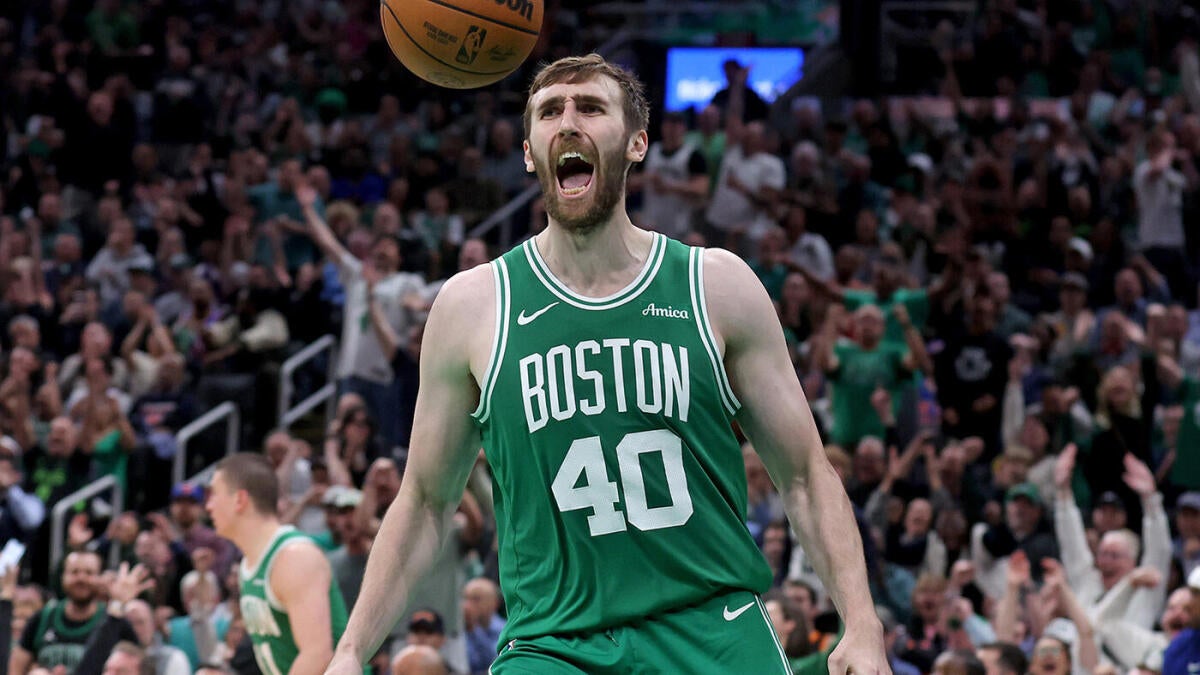The Boston Celtics’ offseason has been marked by significant roster changes, with the departure of Luke Kornet to the San Antonio Spurs standing out as a pivotal move. Kornet, a key reserve big man, left the Celtics on a four-year, $41 million deal, reflecting broader trends in NBA free agency where teams must balance financial constraints, player ambitions, and strategic goals. His exit highlights a notable shift in the Celtics’ lineup structure and introduces new challenges for the team as they navigate the complexities of roster construction.
Luke Kornet’s Departure and Its Implications
Luke Kornet’s role with the Celtics was multifaceted, providing both offensive and defensive contributions. His efficiency on the court was evident in his 2022-23 season averages of six points and over five rebounds per game, coupled with a shooting percentage near 67%. Kornet’s ability to stretch the floor and defend at a high level made him a valuable asset, particularly in a league where versatile big men are increasingly prized. His departure leaves a void in the Celtics’ frontcourt rotation, one that the team must address to maintain their competitive edge.
The financial aspect of Kornet’s move to the Spurs is also noteworthy. The four-year, $41 million contract he signed underscores the growing value of role players who bring specific skill sets to the table. For the Celtics, this loss introduces challenges in salary cap management, particularly as they operate near the luxury tax apron. The team’s inability to retain Kornet suggests a strategic decision to allocate resources elsewhere, possibly to retain core veterans like Al Horford and Derrick White or to explore other free-agent options.
The Celtics’ Free Agency Strategy and Roster Adjustments
The Celtics’ offseason has been characterized by a flurry of activity, including trades and efforts to retain key players. However, the inability to re-sign Kornet points to the financial constraints the team faces. To mitigate his loss, the Celtics have reportedly signed Luka Garza, a promising young center, on a two-year deal. Garza, known for his high-scoring post play and potential for growth, could help fill the immediate void left by Kornet. His addition reflects the Celtics’ strategy to blend youth and experience, a common approach in the NBA as teams seek to maintain competitive balance while managing costs.
This transition also highlights the intricate balancing act teams face during free agency. Managing talent retention, ensuring financial flexibility, and maintaining competitive viability are all critical components of roster construction. The Celtics’ approach signals a commitment to adjusting their lineup to meet these challenges, even as they navigate the complexities of the salary cap and luxury tax thresholds.
The San Antonio Spurs’ Bold Move and Its Significance
The San Antonio Spurs’ acquisition of Luke Kornet is a significant step in their rebuilding process. By allocating their full midlevel exception and committing to a sizeable contract, the Spurs have demonstrated their intent to bolster their frontcourt. Kornet’s arrival provides the Spurs with a versatile big man who can defend and shoot effectively, qualities that are increasingly valuable in modern NBA schemes.
Kornet’s experience in a competitive setting like Boston will be beneficial for the Spurs as they look to accelerate their rebuilding efforts. His ability to stretch the floor and anchor the defense aligns with the Spurs’ tactical needs, particularly in a tough Western Conference landscape. This move could be seen as part of a broader strategy to build a competitive core that can contend in the near future.
Broader Trends in NBA Free Agency
Luke Kornet’s transition from the Celtics to the Spurs exemplifies several broader trends in contemporary NBA free agency. First, there is an increased valuation of role players who bring specific skill sets to the table. Kornet’s substantial contract highlights how teams are willing to invest heavily in players who can contribute in key areas such as efficiency, shot-blocking, and floor spacing.
Second, financial constraints continue to shape team decisions. The Celtics’ difficulty in retaining Kornet points to how salary cap ceilings and luxury tax repercussions influence roster construction. Even successful franchises must make tough choices to manage their financial frameworks effectively.
Third, there is a competitive market for serviceable big men. Interest from multiple teams, including the Clippers and Spurs, signals a league-wide scarcity of reliable big men who can defend and shoot effectively. Players like Kornet are valuable commodities in this environment.
Finally, there is a shift toward integrating youth and potential into rosters. The Celtics’ quick signing of Luka Garza after losing Kornet suggests a strategic pivot toward incorporating young talent. This approach is becoming increasingly common as teams seek to maintain competitive balance while managing costs.
Conclusion: Navigating Change and Building for the Future
The Boston Celtics’ loss of Luke Kornet in free agency is a pivotal event that shapes their offseason narrative. It underscores the delicate interplay between player market value, team financial strategies, and roster construction. While Kornet’s departure leaves a tangible gap, the addition of Luka Garza and continued efforts to secure other free agents point toward a proactive approach to roster resilience.
For the San Antonio Spurs, landing Kornet on a lucrative deal signals a bold step in their rebuilding journey. The move reflects their intent to leverage his skills in building a competitive core that can contend in the Western Conference.
Overall, this free-agent movement epitomizes the evolving NBA landscape, where strategic financial management and talent identification are as crucial as on-court performance for sustained team success. The Celtics now stand at a crossroads, balancing immediate roster needs with long-term aspirations as the next NBA season approaches. Their ability to navigate these challenges will be critical in determining their competitiveness in the upcoming campaign.

